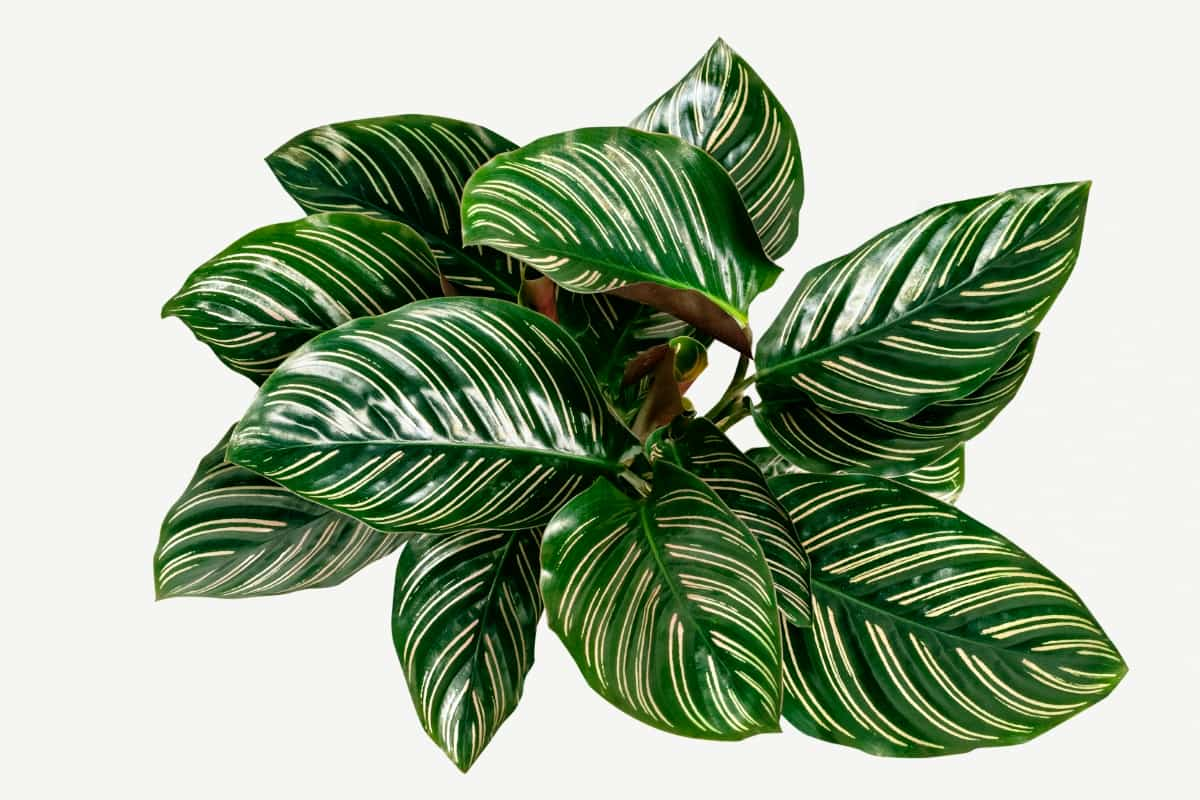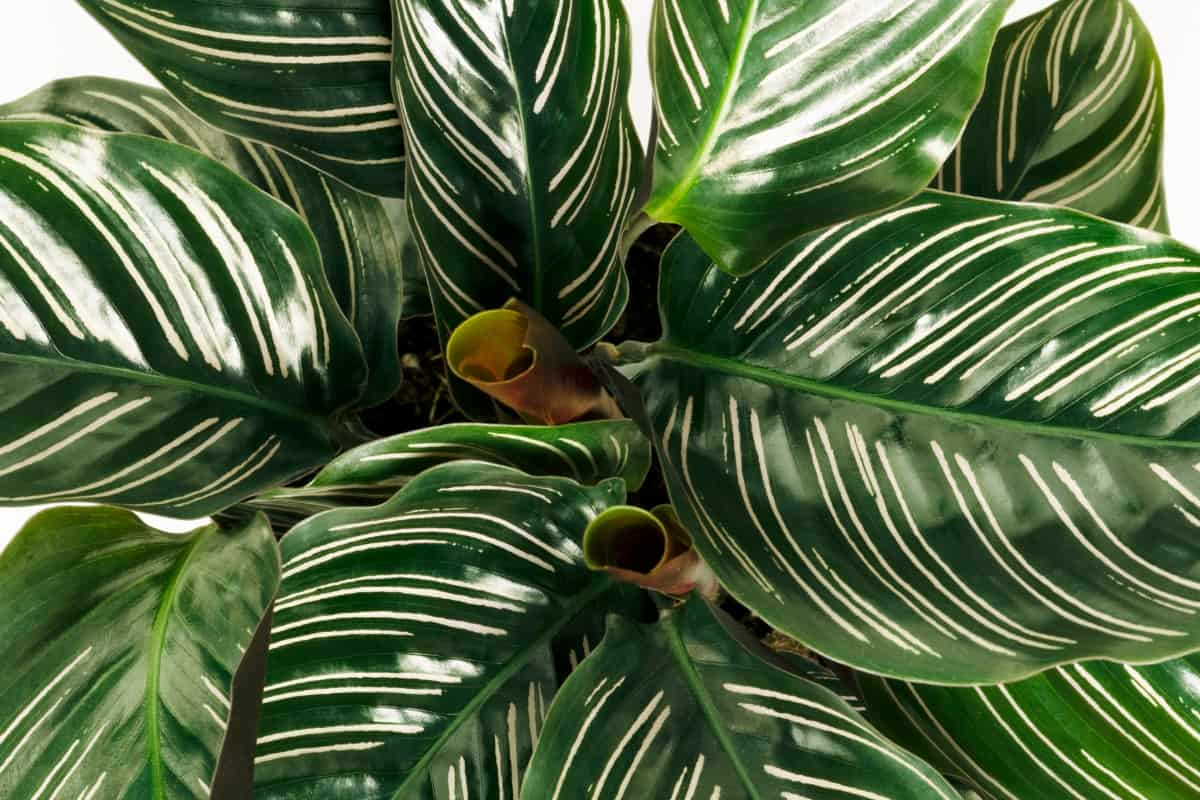Calathea Ornata, also called the Pinstripe Calathea, is a stunning tropical houseplant highly sought after for its striking foliage. With its dark green leaves adorned with pink stripes, this plant adds a touch of elegance to any indoor space. Suppose you’re looking to propagate your Calathea Ornata. In that case, you can try division, where the plant is divided into smaller clumps and used to grow a new plant. With a little patience and care, you can successfully propagate your Calathea Ornata and enjoy the beauty of this unique plant throughout your home.

Calathea Ornata Propagation
- Gently remove the Calathea Ornata plant from its pot and carefully separate the clumps into sections. Each section should have at least two or three stems.
- Inspect the Calathea Ornata roots and remove any damaged or unhealthy ones. Trim excessively long roots to promote healthy growth.
- Prepare a new pot with a well-draining soil mix. Ensure the container has sufficient drainage holes to prevent waterlogging.
- Place each divided section into its pot, ensuring the roots are spread out and covered with soil.
- Water the newly potted divisions thoroughly, allowing the excess water to drain away.
- Place the pots in a warm and humid location, away from direct sunlight. Calathea Ornata prefers indirect light.
- Keep the soil moist consistently but not soggy. Mist the leaves occasionally to maintain humidity.
- Monitor the plants closely for signs of growth. It may take a few weeks for new shoots to emerge.
- Once new growth appears, continue to care for the plants by providing proper watering, humidity, and indirect light.
Factors Affecting
Light is vital in the growth of these plants, as they prefer bright but indirect light. Placing your Calathea Ornata plants near a window with filtered sunlight can help promote healthy growth. Temperature is another crucial factor, with Calathea Ornata thriving in temperatures between 18-29°C.
Avoid extreme temperature fluctuations, which can negatively impact the plant’s health. Lastly, maintaining high humidity levels is essential for successful propagation. Calathea Ornata prefers humidity levels between 50-80%, which can be maintained by misting the leaves with a mist bottle regularly or using a humidifier.
Tips and Tricks for Successful Propagation
- The best time to divide Calathea Ornata is during its active growing season, usually in spring or early summer.
- Before dividing the Calathea Ornata, ensure the plant is healthy and free from pests or diseases. Water the plant a day or two before dividing to make the roots easier to handle.
- You need a sharp, sterile knife or garden shears to divide the plant. Sterilizing the tool will help prevent the spread of any potential diseases.
- Carefully remove the Calathea Ornata from its pot and loosen the soil gently around the plant roots.
- Look for natural divisions or separate the plant into sections with at least two or three stems each. Make clean cuts to avoid damaging the roots.
- Trim any damaged or overly long roots. You can also trim the stems if they are too long but leave enough foliage for photosynthesis.
- Prepare separate pots with well-draining soil mix for each division. Plant the divisions at the same depth as in the original pot.
Common Mistakes to Avoid
- Using dull or unsterilized tools: When dividing Calathea Ornata, always use sharp and sterilized tools to prevent damage or infection to the plant.
- Dividing during the wrong season: Calathea Ornata should be divided during its active growth period, usually in the spring or early summer. Dividing during the dormant season can result in poor growth or even plant death.
- Dividing too often: While the division is a great way to propagate Calathea Ornata, it is important not to divide it too frequently. Dividing too often can stress the plant and hinder its growth.
- Ignoring root health: Inspect the roots for any signs of disease or damage before dividing. Dividing a plant with unhealthy roots can result in poor growth or even death.
- Incorrect planting depth: When replanting the divided sections, plant them at the same depth as the original. Planting too deep or too shallow can affect the plant’s growth and health.
Troubleshooting Common Issues
- Root rot: It occurs when the roots are constantly exposed to excess moisture. To prevent root rot, ensure well-draining soil and avoid overwatering.
- Insufficient root development: If the newly propagated plant fails to develop roots, the division may not have had enough roots to begin with. Ensure that the division has sufficient roots before propagation.
- Slow growth: Lack of growth in the propagated plant can be due to inadequate lighting or improper temperature. Provide bright indirect light and maintain consistent temperatures between 18-29°C.
- Leaf curling or browning: This can be a sign of underwatering or low humidity. Use a humidifier or else pebble tray to increase humidity around the plant, keeping the soil consistently moist but not waterlogged.
- Pests and diseases: Calathea Ornata is susceptible to pests like spider mites and diseases like leaf spot. Regularly watch out the plant for signs of infestation or disease and take control measures, such as using fungicides or natural pest control methods.
In case you missed it: Avocado Tree Propagation and Pollination: Methods and Strategies

In case you missed it: Propagation of Passion Fruit: Growing from Seed, Cuttings, and Grafting

Conclusion
Propagation through divisions is a reliable method to propagate Calathea Ornata and create new plants. The following steps can help you propagate this beautiful houseplant and expand your collection. Enjoy the process and the satisfaction of growing new Calathea Ornata plants from divisions.
- Feed Your Flock for Less: Top 10 Tips to Save on Chicken Feed
- Ultimate Guide to Ossabaw Island Hog: Breeding, Raising, Diet, and Care
- Hatching Answers: The Top 10 Reasons Your Chickens Aren’t Laying Eggs
- Eggs and Economics: Breaking Down the Cost of Raising Backyard Chickens
- Defend Your Greens: Proven Methods to Keep Iguanas Out of Your Garden
- Ultimate Guide to Cinnamon Queen Chicken: A Comprehensive Guide for Beginners
- Ultimate Guide to California Tan Chicken: Breeding, Raising, Diet, Egg-Production and Care
- Ultimate Guide to Marsh Daisy Chicken: Breeding, Raising, Diet, and Care
- 10 Types of Chicken Farming Businesses You Can Start for Profits